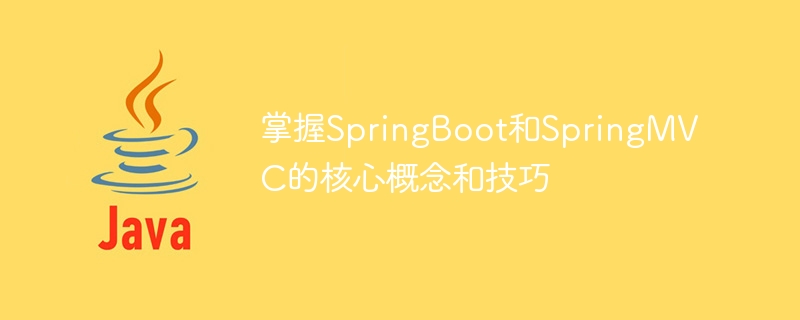

To master the core concepts and techniques of SpringBoot and SpringMVC, specific code examples are required
SpringBoot and SpringMVC are currently very popular Java Web development frameworks and technologies. It provides a convenient and fast development experience and powerful functional support. This article will introduce the core concepts and techniques of SpringBoot and SpringMVC, and use specific code examples to help readers better understand and master these two frameworks.
First, let’s understand the core concepts of SpringBoot. SpringBoot is built on the Spring framework and its purpose is to simplify the development and deployment of Spring applications. SpringBoot uses automatic configuration to reduce developers' configuration work, allowing developers to focus more on the implementation of business logic. In SpringBoot, we can use the @SpringBootApplication annotation to mark the main application class to enable SpringBoot's automatic configuration function. The following is an example of a simple SpringBoot application:
@SpringBootApplication
public class Application {
public static void main(String[] args) {
SpringApplication.run(Application.class, args);
}
}In this example, we use the @SpringBootApplication annotation to mark the main application class, and use the SpringApplication.run method in the main method to start the SpringBoot application. With such a simple configuration, we can quickly build a SpringBoot application.
Next, let’s take a look at the core concepts and techniques of SpringMVC. SpringMVC is a web framework based on the MVC (Model-View-Controller) architecture. It uses annotations and configuration to simplify development work. In SpringMVC, we can use the @Controller annotation to mark the controller class and the @RequestMapping annotation to mark the method that handles the request. Here is an example of a simple SpringMVC controller:
@Controller
@RequestMapping("/hello")
public class HelloController {
@GetMapping("/world")
public String helloWorld(Model model) {
String message = "Hello, World!";
model.addAttribute("message", message);
return "hello";
}
}In this example, we use the @Controller annotation to mark the controller class, and the @RequestMapping annotation to mark the root path of the controller. On the helloWorld method, we use the @GetMapping annotation to map the method to the path of "/hello/world". In the method, we pass the message to the view through the Model object and return the name of the view. In this way, when the user accesses "/hello/world", this method will be executed and the hello view will be returned.
In addition to basic annotations, SpringMVC also provides many other annotations and functions, such as @RequestParam annotation for obtaining request parameters, @ResponseBody annotation for writing return values directly into the response body, etc. By rationally using these annotations and functions, we can better realize the development needs of web applications.
In summary, mastering the core concepts and skills of SpringBoot and SpringMVC is very important for Java Web developers. Through the code examples in this article, readers can better understand and master these two frameworks. Of course, in addition to core concepts and techniques, in-depth study and practice are also indispensable. Through continuous learning and practice, we can flexibly use SpringBoot and SpringMVC in actual projects to develop high-quality and efficient Web applications.
The above is the detailed content of Understanding and application of key concepts and techniques of SpringBoot and SpringMVC. For more information, please follow other related articles on the PHP Chinese website!




